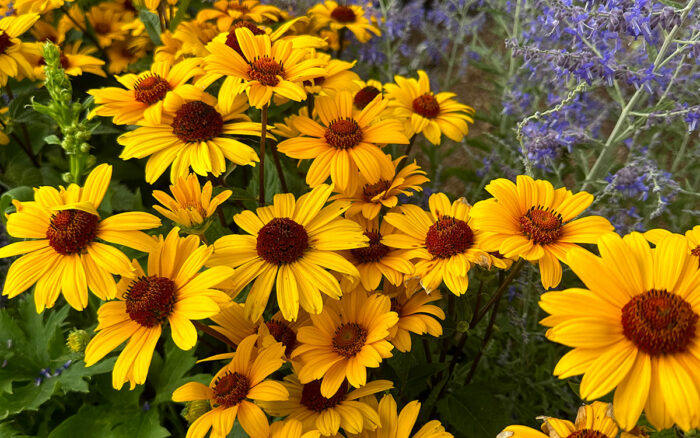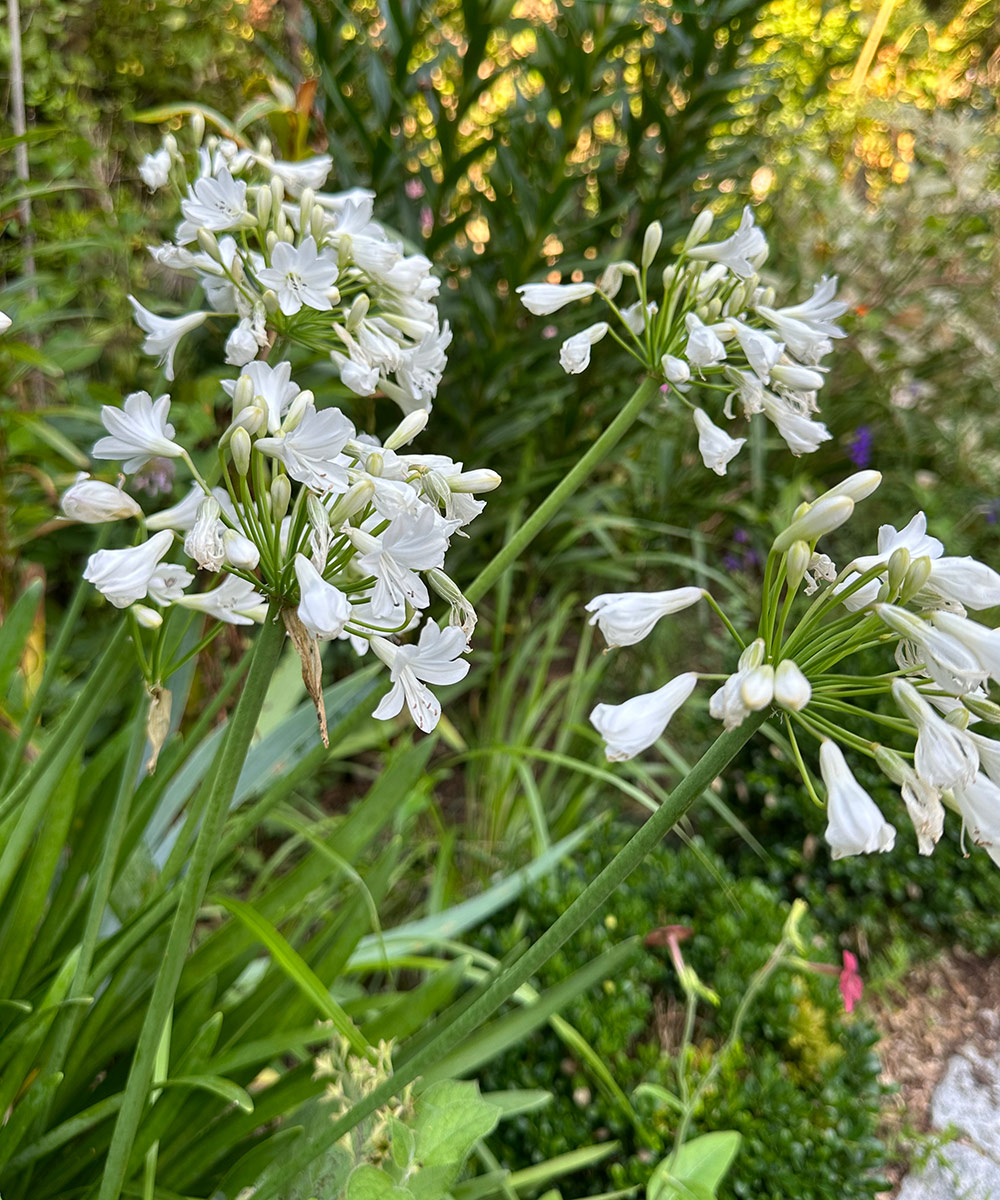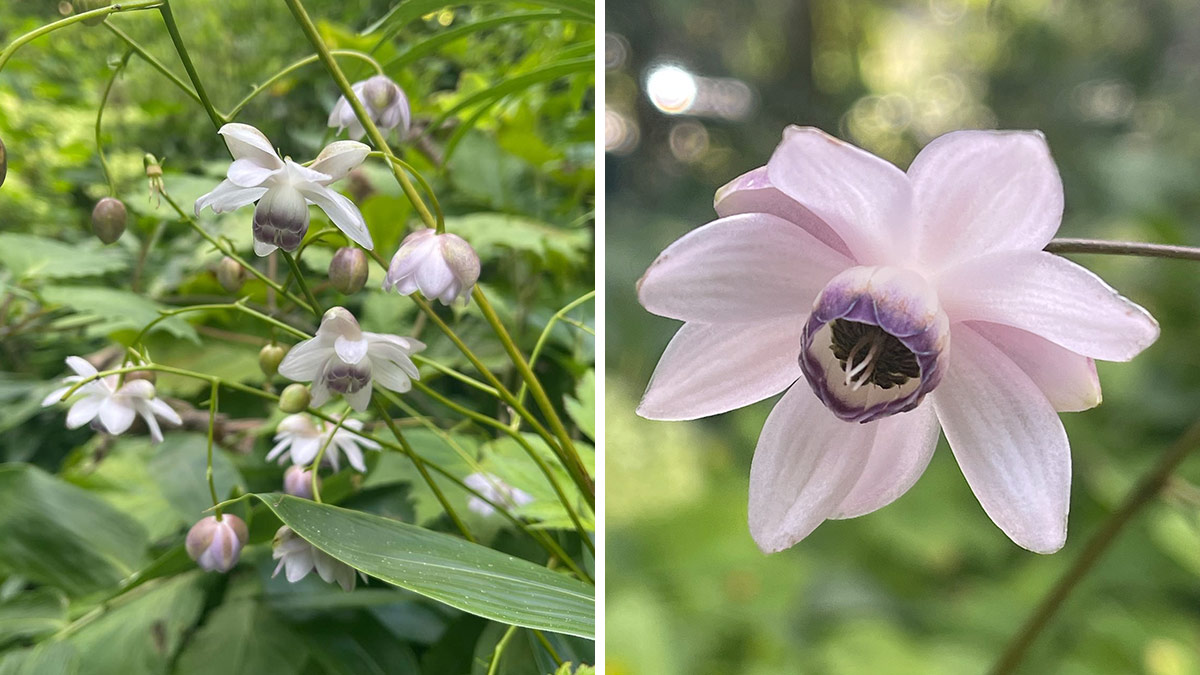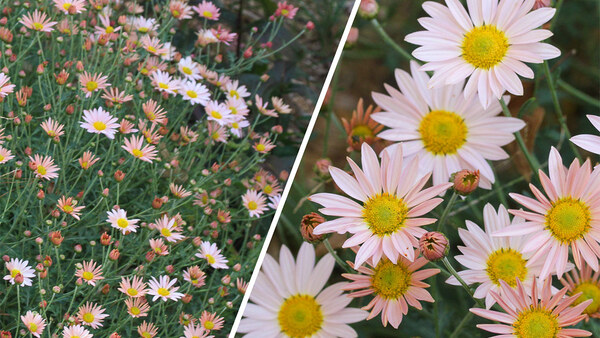
Even the most well-planned border can look a bit shabby or even colorless by mid to late summer. Gaps can occur for many reasons, such as long summer heat waves, extended periods of drought, or—as is my case this year—an unexplained overpopulation of rabbits. There is one more common reason: It’s easy for us gardeners to fall into the trap of buying perennials that bloom earlier in the summer, as that is when most of us visit garden centers, and we are more tempted into buying plants already in bloom rather than something that doesn’t bloom until later.
Visit the garden center in late summer for more options
The fix, however, is an easy one; just go shopping for plants throughout the growing season but especially in late summer, looking for plants already in full bud or bloom. Nurseries have become quite good at offering spectacular late summer perennials and even larger pots of annuals that are perfect for filling in those late summer gaps (and bare spots where the rabbits decided to devour a large group of flowers that were just about to bloom).
If you’re new to gardening, shopping for border fillers in late summer is a great way to learn what looks good at that time of year, plus it’s an opportunity to actually see the colors rather than trust the image on the plant label or online. Adding nursery plants in full bloom can also refresh a border, much like buying new throw pillows to give a seasonal boost to a boring room. Here are three of my favorites that will help spice up your borders at this time of year.

Galaxy series agapanthus
Hardy agapanthus (Agapanthus spp. and cvs., Zones 6–11) has often been a mythical promise for the Northeast. Usually these supposedly hardy plants have just produced leaves without a single bloom in our climate—that is, until now. The Galaxy series from Walters Gardens claims to bring the beauty of South African agapanthus, with its tall wands of blue and white flowers, to Zone 6. I have to admit that I was a bit skeptical. Thankfully, I’ve been proven wrong; even without a layer of mulch I’ve had these plants survive two winters in my central Massachusetts garden.
Always the skeptic, I planted my first ‘Galaxy Blue’ agapanthus (Agapanthus ‘Galaxy Blue’, Zones 6–10) near the foundation of my house to provide a warm microclimate, but it surprised me with loads of bloom for two summers now, so I’ve invested in a few more and even planted a ‘Galaxy White’ agapanthus (Agapanthus ‘Galaxy White’, Zones 6–10) out in my perennial border. I’ve spotted both of these cultivars at plenty of garden centers this summer, all loaded with flower buds. They will each add a big burst of color to any border through late summer.

‘Punto Rosso’ smooth ox-eye
Heliopsis helianthoides ‘Punto Rosso’, Zones 4–8
Smooth ox-eye is a North American native species that is typically too tall and floppy (at 5 feet tall or even taller) to plant in a tidy border. ‘Punto Rosso’ is a new selection that not only blooms like crazy with orange-yellow daisies, but stays compact at 18 to 24 inches tall. Factor in deer resistance, a long blooming period, excellent cold hardiness, and the ability to attract many different pollinators, and this plant delivers on a long checklist of good traits we all can appreciate. Best of all, garden centers often carry this plant when it’s just coming into bloom in August.

False anemone
Anemonopsis macrophylla, Zones 4–8
Even the shady border can use a lift in late summer, and “lift” is just what these dangling lavender flowers on tall, wiry stems will do to your spirits. You are forgiven if you are unfamiliar with this Japanese woodland plant, but I promise you that it’s worth seeking out. Distantly related to ranunculus (Ranunculus spp. and cvs., Zones 8–10), false anemone doesn’t really look like any other plant—that is, unless an anemone (Anemone spp. and cvs., Zones 3–11) and a columbine (Aquilegia spp. and cvs., Zones 3–8) had a baby. I think this singularity is a good thing, as it looks rare and interesting, which is always a plus for serious gardeners.
False anemone is easy to please in woodland conditions, where there is dappled shade, or in any areas where your hostas (Hosta spp. and cvs., Zones 3–9) are thriving—like under a deciduous tree or on the shady side of your house. This plant looks a bit uninteresting until August, when thin stems that can reach up to 3 feet tall emerge out of astilbe-like foliage. Small, round flower buds eventually burst open into stunning, waxy lavender blooms that hang gracefully downward like chandeliers. The show lasts until autumn and just gets better and better—that is, until you get sick of garden visitors asking about this unusual late-summer gem and where you got it. Luckily, it spreads slowly and is easy to divide in spring, so you’ll have enough to share.
Any plain-Jane fading border can be spiced up with one or more of these stunning late-blooming plants. For more ideas for late summer, check out Late-Summer Combinations.
And for more Northeast regional reports, click here.
—Matt Mattus is the author of two books: Mastering the Art of Flower Gardening and Mastering the Art of Vegetable Gardening. He gardens in Worcester, Massachusetts.
Photos: Matt Mattus
Fine Gardening Recommended Products

Planting in a Post-Wild World: Designing Plant Communities for Resilient Landscapes
Fine Gardening receives a commission for items purchased through links on this site, including Amazon Associates and other affiliate advertising programs.

Corona® Multi-Purpose Metal Mini Garden Shovel
Fine Gardening receives a commission for items purchased through links on this site, including Amazon Associates and other affiliate advertising programs.

The Regenerative Landscaper: Design and Build Landscapes That Repair the Environment
Fine Gardening receives a commission for items purchased through links on this site, including Amazon Associates and other affiliate advertising programs.



















Comments
The very last thing to bloom in my NH garden is Monk's Hood (Aconitum) - a sturdy, tall stand with interesting deep green leaves and stacks of lovely purple flowers that really do look like the cowls of a monk's habit. Highly toxic, so best handled carefully with gloves, but I rarely have need to touch it. I've divided it once with no problems. Mine is in bright sunlight. It's a lovely blast of rich purple among all the turning leaves of autumn. I consider it my garden's swan song.
Log in or create an account to post a comment.
Sign up Log in